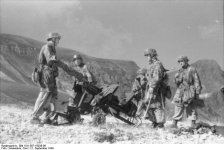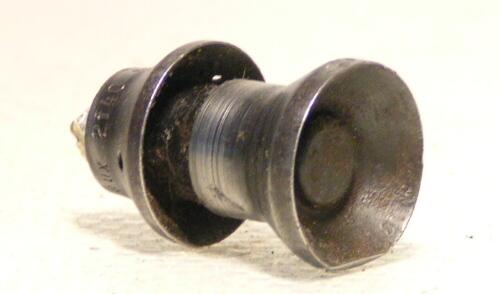Probably a bit late to the party but I feel as a techie history nerd, I feel compelled to chime in.
Let me preface this by saying, being shot by a PTRS, or a panzerbusche would definately ruin your day. It would be something you would really, really, really want to avoid, simply because having holes poked in your body is general bad news.
Being cut in half, or turning into a grisly hamburger pulp on the pavement? Unlikely. Mostly it involves variables that come into play and isn't solely about facts such as muzzle velocity, weight or even bullet shape.
Speed is a huge factor. Anyone familiar with the lethality of bullets should be familiar with the terms "Over penetration" and "cavitation." I saw someone posted videos of ballistics gel tests, so you can see a prime example of cavitation there. As you all know, bullets start out fast and gradually drop off due to wind resistance. Speed also determines how fast the bullet will pass into and through a body. Simply put speed can change how a bullet fragments within the body. It takes time for the bullet to fragment, quite a lot of time in fact when you break it down into the mili and nanosecond scale we're talking about here. So, a bullet traveling at 3,655 FP/S, will pass through a human in an amount of time so small, its not worth calculating. Even if the person is 1 foot thick, which is really quite a fat person, we're still talking about an infinitesimal amount of time. Even if the round DID fragment, at near muzzle velocity it will be in, and out of the body before it has time to come completely apart. Now at longer ranges where its lost some of its speed, you'll begin to see more and more damage at the impact site, until you drop below a specific threshold, and you start to slide back down the bell curve. This is part one of Over Penetration.
Part two, is where we talk about cavitation. Cavitation is literally the "wake" a bullet makes when passing through a material. Think of a boat on a lake and you'll see it making a cavitation analog. The size of the bullet, the shape of the bullet, and the speed of the bullet all affect cavitation. You can actually see the cavitation issue come up quite often in modern military and law enforcement discussions when they debate between 9mm vs. .45, and their strengths and weaknesses (also a good source to look into info about part 1 of over penetration). A 9mm flies very, very fast compared to a .45. Specifically 1,200-1,400 FP/S for a 9mm, vs. 900-1,200 FP/S for a .45 acp. Simply put, a 9mm moves too fast through the body to develop a significant cavitation, where as a .45 takes its sweet time and cruises through taking the scenic tour and setting up a nice big cavitation, and even sympathetic reflective cavitation if you hit all the squishy bits. And boys and girls its the nice, big cavitation that renders your giblets into, well... giblets.
On top of all of THAT, bullet shape has a HUGE factor in cavitation. Simply put the more streamlined the bullet, the less cavitation there is. If you've never looked at a .45 slug, its face is usually a ball (talking about FMJ here, not fancy types like hollow point or frangible rounds), where as rifle and 9mm rounds tend to be a little more streamlined, which is made specifically to facilitate movement through the air, with a minimum of drag. That, in a very simple nutshell means its meant to not affect the air in the same way as a rounder bullet in its passing. Water or liquids behave much as air does, and this translates to lower cavitation generation in liquids. Simply put the type of round fired by the PTRS, and Panzerbusche 39, are designed not for human flesh, but to penetrate steel, and hard objects. They are streamlined, move very fast, and designed NOT to fragment. After all, the steel penetrator wouldn't make it very far if the Jacket blew apart on contact. They are designed to penetrate the steel a little, ablate the jacket and let the penetrator keep going. Add on top of that the fact that the human body while being 70% water, we are not giant fleshy water balloons. We have several areas that have little to no water, and a few places that are just empty. No liquids in them to cause cavitation. As a matter of fact if your chest area was filled with liquid and/or meat, you wouldn't be alive long because you couldn't breathe.
So to wrap this up (I have more on ammunition types, locations hit, and why ballistics gel isn't 100% accurate, if I don't get flamed to death and anyone is interested), yes, being shot by a Anti Tank rifle would definitely be lethal in 90% of cases. Yes it would kill you rather dead. In a one in a million shot, it might take off a limb. Cut you in half? No. Render you into a hollow man? Probably not. You'd have a neat little hole in the front, a slightly larger hole in the back, and a very bad day.



